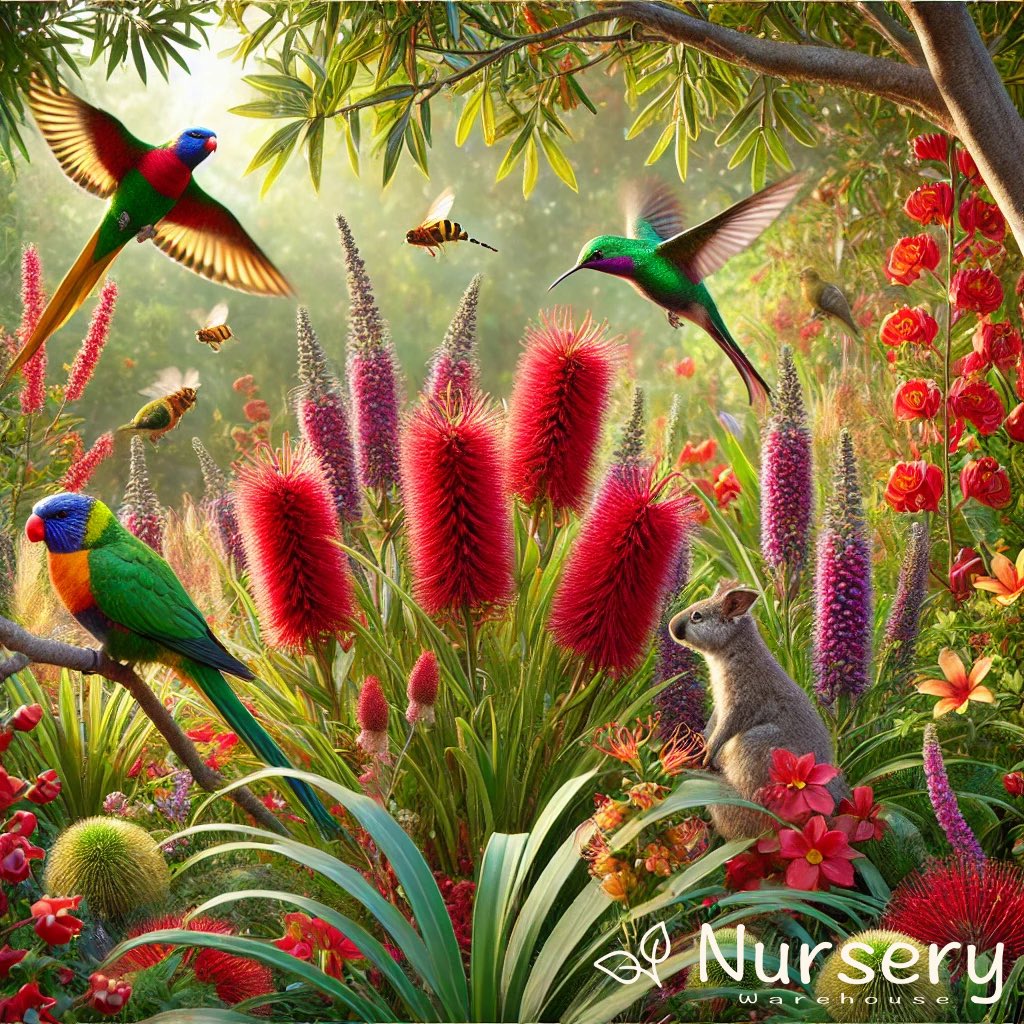
Native Australian Plants to Attract Birds and Bees
Creating a garden that attracts birds, bees, and other beneficial wildlife is a wonderful way to support local ecosystems while enjoying a vibrant and lively outdoor space. Native Australian plants are perfectly adapted to our climate and are an excellent choice for wildlife-friendly gardens. Here are some top picks available at Nursery Warehouse to make your garden a haven for birds and bees.
1. Grevillea ‘Robyn Gordon’
Grevilleas are a favourite for attracting nectar-feeding birds like lorikeets and honeyeaters. The ‘Robyn Gordon’ variety blooms almost year-round with stunning red flowers, providing a reliable food source.
- Best Time to Plant: Autumn or spring
-
Maintenance Tips: Water during establishment; prune lightly after flowering to encourage new growth
Web address: https://www.nurserywarehouse.com.au/products/grevillea-robyn-gordon
2. Callistemon (Bottlebrush)
Bottlebrush plants produce bright, nectar-rich flowers that are irresistible to bees and birds. Their hardy nature makes them an easy choice for Australian gardens.
- Best Time to Plant: Spring or autumn
-
Maintenance Tips: Tolerant of drought once established; prune after flowering to maintain shape
Web address: https://www.nurserywarehouse.com.au/products/callistemon-bottlebrush
3. Banksia Spinulosa (Hairpin Banksia)
This compact Banksia produces golden-orange flowers that bloom from autumn to spring, making it a valuable nectar source during cooler months. Birds and bees flock to its striking blooms.
- Best Time to Plant: Autumn or winter
-
Maintenance Tips: Requires well-drained soil; water sparingly once established
Web address: https://www.nurserywarehouse.com.au/products/banksia-spinulosa
4. Kangaroo Paw (Anigozanthos ‘Carnivale’)
With its unique tubular flowers, the Kangaroo Paw is a magnet for native birds and bees. The ‘Carnivale’ variety features vibrant purple-pink blooms and is a hardy, low-maintenance option.
- Best Time to Plant: Spring to early summer
-
Maintenance Tips: Keep soil slightly moist; remove spent flowers to extend the blooming period
Web address: https://www.nurserywarehouse.com.au/products/anigozanthos-carnivale
5. Melaleuca (Tea Tree)
Melaleucas produce clusters of tiny, fragrant flowers that bees adore. They also offer shelter for small birds, making them a great all-rounder for wildlife gardens.
- Best Time to Plant: Spring or autumn
-
Maintenance Tips: Water during dry periods; prune to maintain size and shape
Web address: https://www.nurserywarehouse.com.au/products/melaleuca-tea-tree
6. Eucalyptus Cinerea (Argyle Apple)
Eucalyptus trees provide a crucial food source for birds, bees, and other insects. The Cinerea variety has attractive silvery foliage, adding a striking aesthetic to your garden.
- Best Time to Plant: Autumn or early spring
-
Maintenance Tips: Minimal pruning required; prefers well-drained soil
Web address: https://www.nurserywarehouse.com.au/products/eucalyptus-cinerea
7. Hakea Laurina (Pincushion Hakea)
This stunning native shrub produces large, round flowers resembling pincushions. It’s a favourite among nectar-loving birds and bees during its flowering season in autumn and winter.
- Best Time to Plant: Autumn
-
Maintenance Tips: Prefers sandy or well-drained soil; prune lightly after flowering
Web address: https://www.nurserywarehouse.com.au/products/hakea-laurina
8. Syzygium ‘Cascade’ (Weeping Lilly Pilly)
This versatile native plant produces fluffy white flowers followed by pinkish berries, both of which attract birds and insects. It also works beautifully as a hedge or screening plant.
- Best Time to Plant: Spring to early summer
-
Maintenance Tips: Keep soil moist during establishment; prune regularly to maintain shape
Web address: https://www.nurserywarehouse.com.au/products/syzygium-cascade
9. Westringia Fruticosa (Coastal Rosemary)
Westringia is a hardy, drought-tolerant shrub with small purple or white flowers that attract bees. Its dense foliage also provides great shelter for small birds.
- Best Time to Plant: Autumn or spring
-
Maintenance Tips: Minimal pruning; thrives in coastal or inland conditions
Web address: https://www.nurserywarehouse.com.au/products/westringia-fruticosa
10. Leptospermum (Tea Tree)
Leptospermum produces masses of tiny flowers that are a magnet for bees, while its dense growth habit offers nesting sites for birds.
- Best Time to Plant: Spring
-
Maintenance Tips: Water during dry periods; prune lightly after flowering
Web address: https://www.nurserywarehouse.com.au/products/leptospermum-tea-tree
By incorporating these native Australian plants into your garden, you’ll not only create a beautiful and thriving space but also provide essential food and shelter for local birds and bees. Supporting wildlife has never been so rewarding or easy!
Ready to plant your wildlife-friendly garden? Visit https://www.nurserywarehouse.com.au to explore our full range and buy online today!
